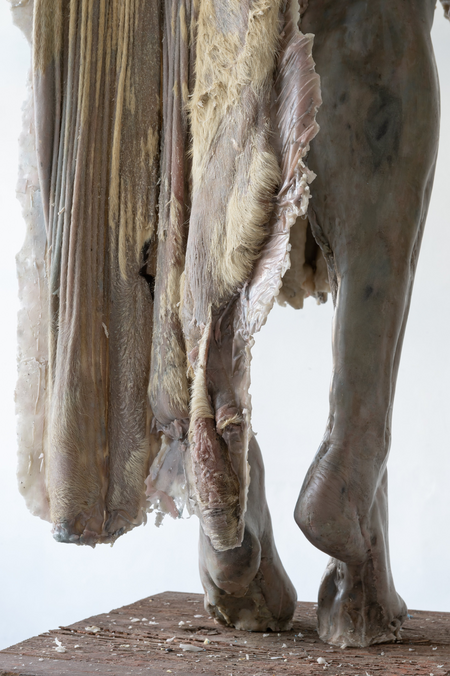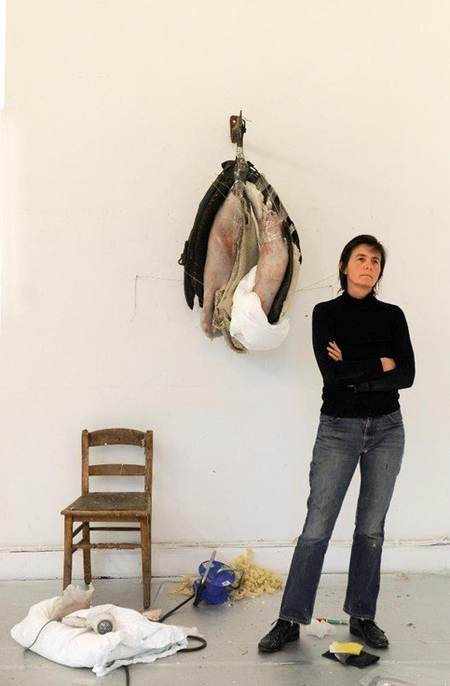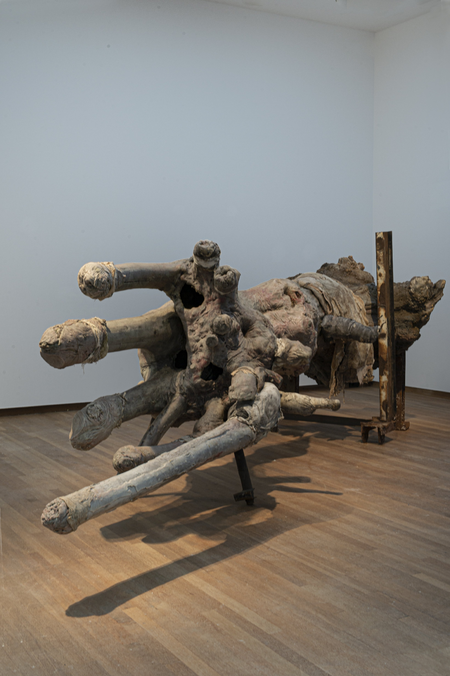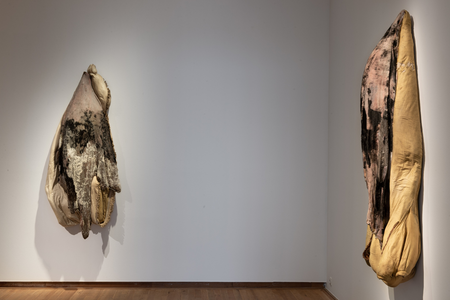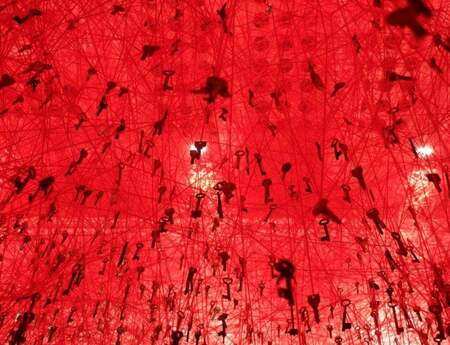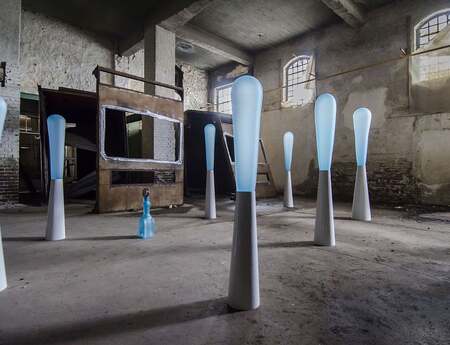Berlinde De Bruyckere, Guardian Angels
Our Belgian pride Berlinde De Bruyckere (B. 1964) is featured in Engelenkeel, with works from 2014 to the present, in Bonnenfantenmuseum in Maastricht, NL. Her latest body of work was created during the confinement of the lockdown. The pandemic gave her themes as transience, suffering and consolation a new impetus.
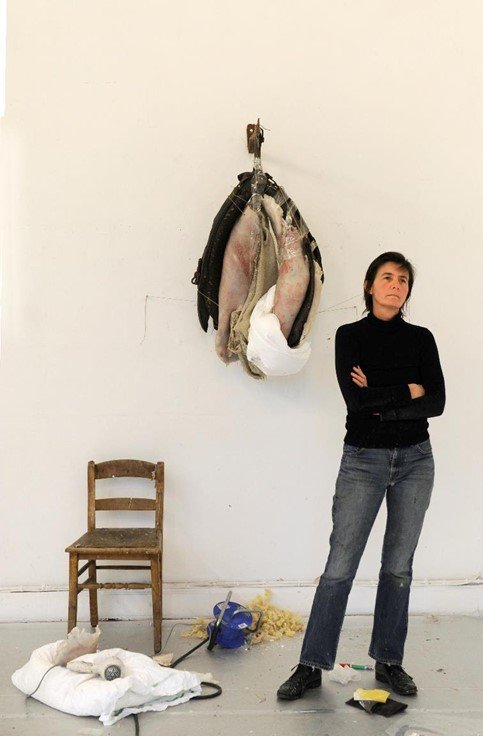
Flemish battlefields
Let’s rewind for a moment. Around 2000, the artist became known for her imposing horse bodies, which in their strength and dignity, refer to Flanders Fields, the Flemish battlefields of World War I. Together, these reclining and hanging horse carcasses form tableaus. The haunting figures urge the viewer to identify with them, and sympathize with their pain. The next 20 years, the themes of suffering, life and death, torture and consolation, will not be abandoned.
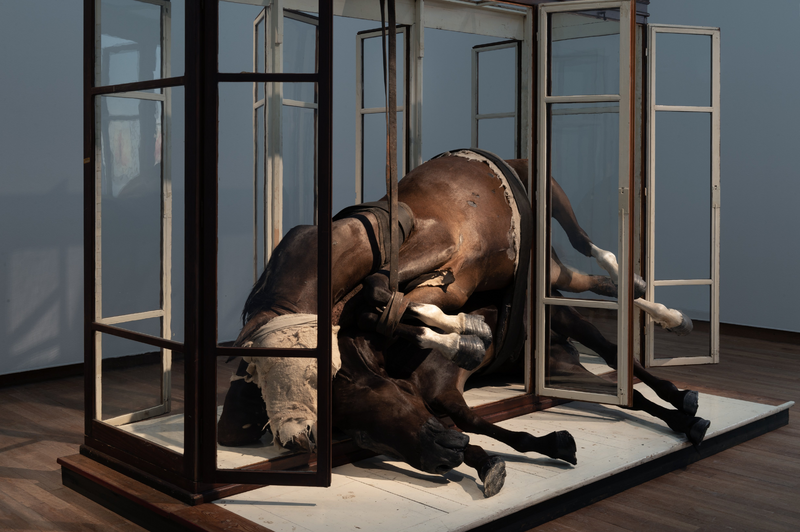
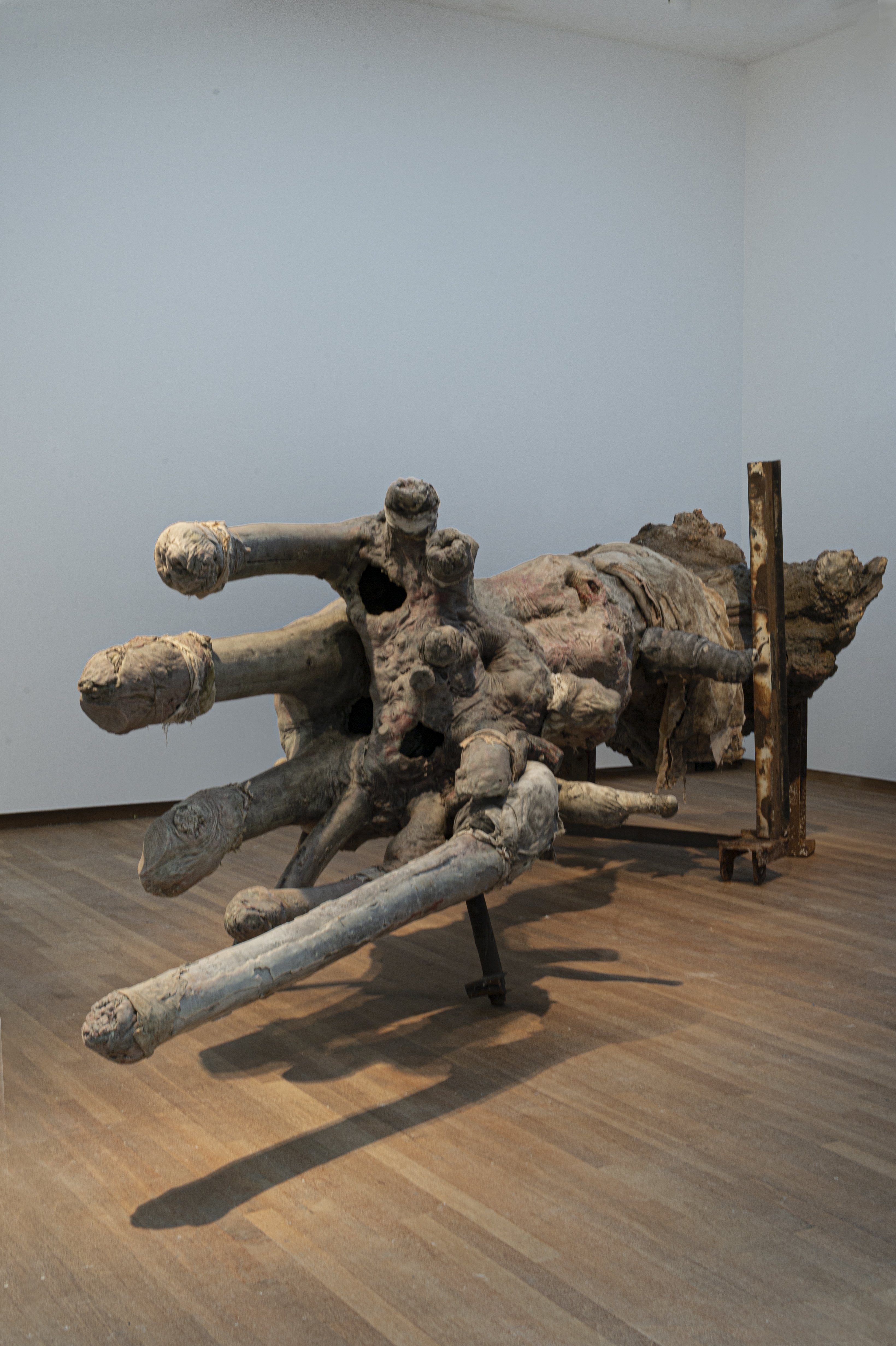
Subsequently, De Bruyckere gained recognition for her drawings and her so-called 'blanket women'; wax sculptures of women covered with blankets. The blanket, under which we can physically cover and hide, conveys different association, ranging from suffocation, the protection and security of childhood, to current images of refugee camps.
Suffering body
Since 2005 De Bruyckere has been seducing us with her headless, distorted 'suffering bodies'. Pain comes very close, yet, at the same time, decay transforms in beauty, and vulnerability becomes poetry. The familiar religious iconography of the suffering body of Christ, is not far away. Her later oeuvre is characterized by large pronged wax casts of animal skins.
Mythology and current conflicts converge. Powerful exhibitionist expressions of impotence go hand in hand with strength, death and resurrection. Rise again.
In 2013, the monumental work Cripplewood impressed the visitors of the Belgian pavilion at The Venice Biennial. This creature – is it the wounded Saint Sebastian, or a wounded tree? - is naked and vulnerable. The imposing skin-colored and skin-like weave looms up before us. Bitter beauty that haunts all visitors. The accompanying book was the fruit of a meeting between Nobel Prize winner J.M.Coetzee and the artist. She shared the love for sardonic beauty of his writings. A must have!
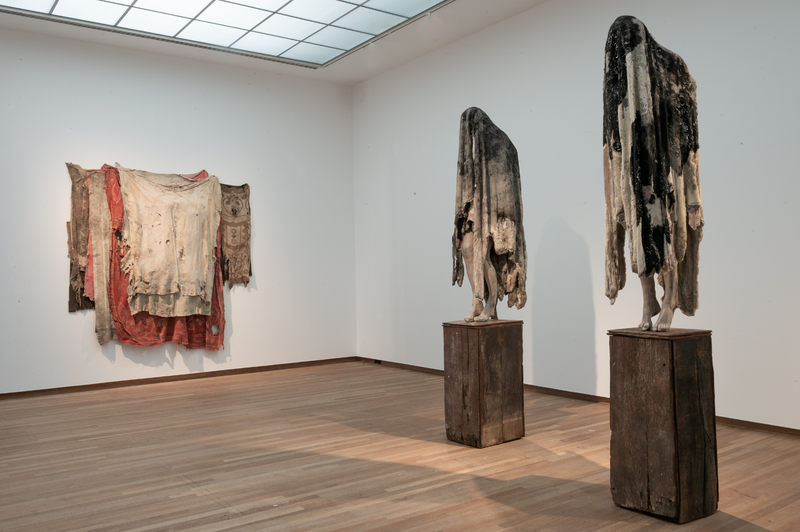
Flower
Another achievement dates from 2019, when De Bruyckere presented her show It almost seemed a lily at the Museum Hof van Busleyden in Belgium. She was fascinated the fragility and decay of the socalled ‘Enclosed Gardens’, altarpieces filled with profusion of artefacts, ranging from handmade flowers to bone relics wrapped in fabric.
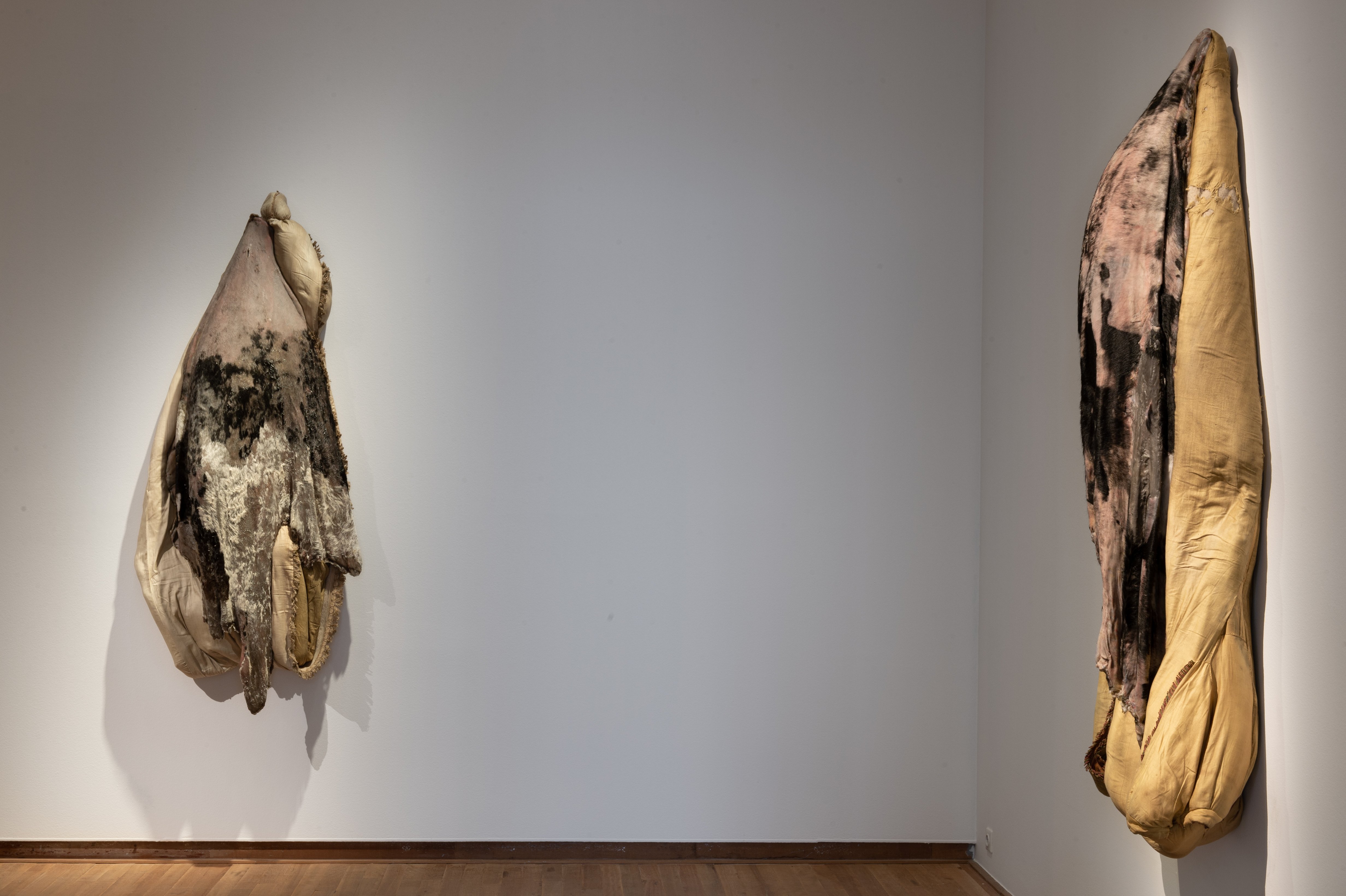
The artist linked the fragile fallen petals to the delicate human skin. Transforming people into animals and flowers is no stranger to her. In this case, she linked the lily to Hyacinthus transforming in a flower, as described by Ovid in his book Metamorphoses. Large reliefs with lilies sprung from this story, mingling the religious symbolism of virginity and purity with erotic connotations.
Space for Pain
Now we move to the current exhibition in the Bonnefanten Museum in Maastricht. Although the oeuvre of Berlinde De Bruyckere carries a common thread, and could in a sense be seen as a single work, in each of the various halls, a different theme is tackled. No one can escape from her multi-layered oeuvre. Despite the ambiguous encounters that are not always pleasant to look at, and confront us with serious issues such as transience and death, her works also call for rapprochement, comfort and touch.
Christian iconography and classical mythology are a source of inspiration for the Bruyckere, but you don't have to know the content to be overwhelmed by the images themselves. Besides, according to De Bruyckere, religion gives people a space where pain is allowed to just 'be', which she pursues in her art as well. However you look at it, these are powerful raw sculptures that find strength in fragility. They make the unsayable sayable. Isn't this what art is all about?
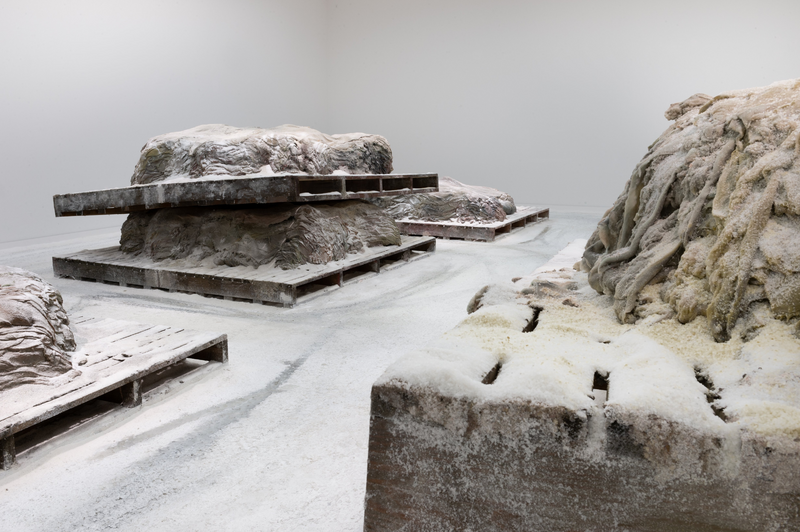
Supporting angel
As with more artists, the world disease of the last 18 months left its mark on De Bruyckere’s work. Arcangelo - full-length angels - and Sjemkel - the more compact wing sculptures - are the aftermath. Moved by the hidden angel hidden in The Dead Christ Supported by an Angel by Renaissance painter Giorgione, she made the link with all caretakers - angels as it were - for the Covid-patients.
However, she does not depict the angels as in our dreams. They are rather angels in development, like an 'ugly' duckling becoming a beautiful swan. A heavenly one who provides a refuge from the fear and loneliness, which burdens us in the current crisis.
And the title of the exhibition Engelenkeel (Angel’s Throat), where does it come from? To the artist it sounds like a cry, and it is. One elongated cry that lures us into that place where love and suffering are close, but oh, so beautifully bandaged.
Berlinde De Bruykere, Engelenkeel, Bonnefantenmuseum Maastricht, NL
Until 3 October, 2021
Publication Engelenkeel, (Dutch) Mercatorfonds and Bonnefanten, 2021
www.bonnefanten.nl
Paradise, group exhibition, Kunstroute Kortrijk, BE, until 24 October 2021
www.paradisekortrijk.be
Author: Hilde van Canneyt
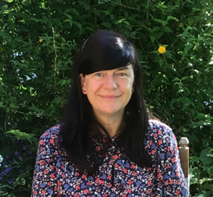
The Belgian art journalist Hilde Van Canneyt (Ghent, BE) is best known for her more than 250 interviews with Belgian and Dutch artists, which are published on her website, and in different media. What is art? Who is an artist? Why does someone lock himself up to communicate through an art object?
In 2013, the first 85 interviews were publised under the title Hilde Vraagt. In 2021, a second book followed, 4321 Questions to 123 Artists, published by Borgerhoff & Lamberigts.
As a freelancer, Van Canneyt writes reviews, texts for artists and catalogs. She is asked as a curator, member of juries and art commissions. She is also an art coach.
Cover picture: Berlinde De Bruyckere, ARCANGELO III, 2020, wax, wood, animal hair, metal, epoxy, H 300,5 × 61 × 67 cm (detail), Photo: Mirjam Devriendt
